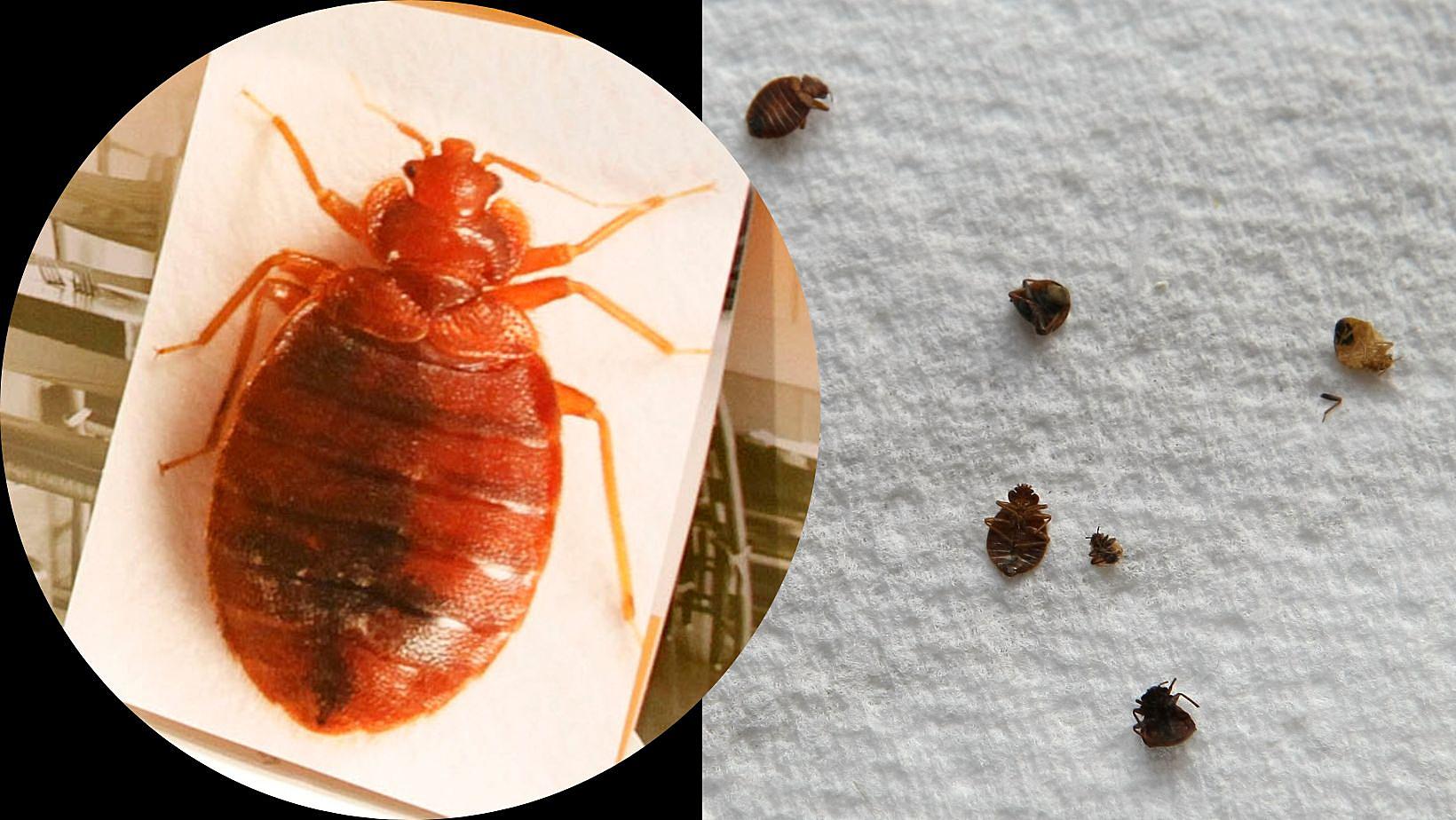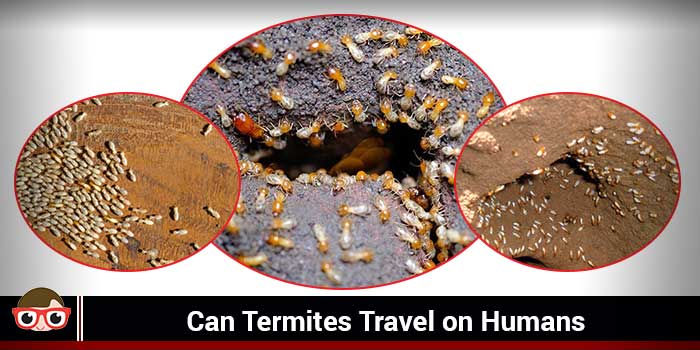Termites cannot travel on humans due to their inability to cling or attach to human bodies. These insects primarily move through structures and materials, seeking sources of cellulose to feed on, causing extensive damage in the process.
Termites, despite their small size, can create significant havoc in homes and other structures. These pests are known for their extensive tunneling and nesting habits, which often go undetected until significant damage has occurred. Although termites can travel over the ground, they do not attach themselves to humans or use them for transportation.
Instead, termites rely on existing sources of wood or cellulose, such as trees, stumps, or wooden structures, to build their colonies. Proper termite prevention and timely inspections are crucial to protect homes and property from these destructive pests.
The Role Of Termites In Ecosystem
Termites, being social insects, play a vital role in the ecosystem due to their feeding and nesting habits. These tiny creatures are capable of breaking down cellulose, helping in the decomposition process. Their constant tunneling and foraging activities enhance soil aeration and nutrient cycling.
By feeding on dead plants and decaying wood, they contribute to the breakdown of organic matter, releasing nutrients back into the soil. Termites’ nesting habits also improve soil structure and help with water infiltration. Additionally, the constant construction and maintenance of termite mounds provide habitats for other organisms.
While termites may not directly travel on humans, their presence and activities have a significant impact on the overall health and functioning of ecosystems. Understanding the importance of termites helps promote balance and conservation efforts in natural environments.
Termite Travel And Dispersal Methods
Termites, while tiny insects possess the ability to travel and disperse through various natural mechanisms. These include flight, swarming, and walking. The winged reproductive termites, known as alates, are capable of flying long distances to find new habitats for colonization.
They are often attracted to light sources. Swarming is another method employed by termites for dispersal, wherein a large number of winged alates emerge from their nests simultaneously. Once on the ground, they shed their wings and commence searching for suitable locations to start new colonies.
However, not all termites are equipped with wings. Worker termites, for instance, rely on walking to move short distances. Despite their small size, termites have the potential to travel far and wide, allowing them to expand their territories and infest new areas.
Various factors, such as climate, resources, and environmental conditions, can influence the dispersal patterns of termites. Understanding these mechanisms is crucial in managing termite infestations effectively.
Myth Or Reality: Can Termites Travel On Humans?
Termite infestations can be a homeowner’s nightmare, but the idea of termites traveling on humans may be nothing more than a myth. Understanding the origins of this misconception is key. While it is true that termites can travel by clinging onto various objects, including animals and humans, the likelihood of termites directly transferring from one person to another is highly unlikely.
Examining the scientific evidence confirms that termites primarily spread through their own natural means, such as building mud tubes or swarming during specific seasons. Debunking common misconceptions surrounding termite travel on humans is essential in ensuring accurate information is disseminated.
By providing scientific explanations and dispelling unfounded beliefs, we can help homeowners make informed decisions regarding termite prevention and treatment measures.

Credit: eagle1023fm.com
Termite-Human Interactions
Termites can indeed travel on humans, which raises concerns about potential risks and implications. In urban areas, where human activity is high, the likelihood of termite-human interactions increases. These encounters can result in termite infestations within our homes and buildings.
The damage caused by termites can be significant and costly to repair. To prevent and manage termite infestations, it is crucial to implement effective strategies. Regular inspections and maintenance can help identify and address termite issues early on. Additionally, removing any sources of moisture and food that attract termites is essential.
Applying appropriate treatment methods and seeking professional assistance when needed can also help mitigate the risks associated with termite-human interactions. By taking proactive measures, we can safeguard our homes and minimize the potential damage caused by termites.
Termites And Their Preferred Environments
Termites are attracted to environments that offer ideal conditions for their survival and reproduction. Human habitats can inadvertently create these conditions, leading to termite infestations. Warm climates, moisture, and easily accessible wood or cellulose-based materials are all factors that attract termites.
Additionally, neglected maintenance, such as leaky pipes or waterlogged soils, can create moisture-rich environments in which termites thrive. To avoid termite problems, it is crucial to take preventive measures. Regularly inspecting and addressing any moisture issues around your home, such as fixing leaks and ensuring proper drainage, can help reduce the risk of attracting termites.
Additionally, storing firewood away from the house and maintaining a gap between soil and wood structures can deter termites. By implementing these strategies, you can minimize the chances of termites infesting your home and causing damage.
Termite Travel On Other Animals
Termites are known to travel on various animals, utilizing them as carriers for dispersal. Wildlife, in particular, plays a crucial role in the movement of termites, aiding in their distribution across different locations. By hitching a ride on animals, termites can cover large distances and establish new colonies in unfamiliar territories.
This symbiotic relationship benefits both the termites and the animals involved. While termites get to explore new habitats, animals inadvertently aid in the dispersal of termites, which in turn contributes to the overall biodiversity of an area. This interaction between termites and animals highlights the interconnectedness of different species and the intricate web of relationships in nature.
Understanding these relationships can provide valuable insights into the behavior and dispersal patterns of termites, ultimately aiding in pest management strategies.
Termites And Disease Transmission
Termites and disease transmission have sparked concerns regarding potential health risks. Investigating the link between termites and diseases is essential. Understanding this connection prompts the need for preventive measures to avoid termite-related health issues. By examining the ways termites may contribute to disease transmission, we can take proactive action to protect ourselves and our surroundings.
Maintaining proper hygiene and cleanliness, identifying and addressing termite infestations promptly, and implementing effective pest control measures are crucial steps in mitigating health risks. Regular inspections, sealing entry points, and removing potential termite habitats are also recommended. By understanding the potential dangers associated with termites and taking preventive measures, we can safeguard our well-being and ensure a healthy living environment for ourselves and our loved ones.
Understanding Termite Behavior
Termites have a fascinating behavior that involves communication and cooperation within their colonies. These small insects travel through tunnels and mud tubes, constantly searching for food and new areas to expand. They have a well-developed social structure where they work together for the survival of the colony.
Understanding the anatomy of termites helps us grasp how they can navigate through different environments. Termites rely on pheromones for communication, allowing them to coordinate their activities efficiently. However, their behavior can have implications for human dwellings. Termites can damage wooden structures, causing significant harm if left untreated.
It is important to be aware of these pests and take preventive measures to protect our homes from potential infestations. Regular inspections and professional assistance are crucial in preventing termite damage and ensuring the durability of our living spaces.
The Future Of Termite Research
Termite research has made significant progress with advancements in tracking and monitoring techniques. Sustainable methods of termite control are being developed, focusing on minimizing their impact on the environment. Promising areas for future study and innovation include exploring the use of biological controls, such as nematodes and fungi, to combat termite infestations.
Scientists are also investigating the potential of pheromone-based technologies to disrupt termite communication and behavior. Remote sensing technologies and drone-based surveys are being utilized to better understand termite distribution and activity patterns. These developments are crucial for effective termite management and will help to address the challenges faced in controlling termite populations.
The future of termite research looks promising, with a focus on environmentally friendly and sustainable approaches.
Frequently Asked Questions For Can Termites Travel On Humans
Can You Carry Termites Home On Your Clothes?
Termites can be carried home on your clothes, so take precautions to avoid bringing them in.
Can Termites Travel On You?
Yes, termites can travel on you.
What Happens If Termites Get On You?
If termites get on you, they can bite and cause skin irritations.
How Do You Keep Termites From Moving With You?
To prevent termites from moving with you, take these steps: 1. Conduct a thorough inspection of your current property for any signs of termites. 2. Hire a professional pest control service to treat and eliminate any existing termite infestations. 3. Ensure that all wood and cellulose-based materials in your home are treated or sealed to deter termites.
4. When packing, carefully inspect and clean all items, especially wooden furniture and boxes, to remove any potential termite eggs or larvae.
Conclusion
The level of concern regarding termites traveling on humans relies on the specific circumstances, but it is unlikely to be a common occurrence. While termites are highly adept at finding new food sources, they typically prefer to remain within their established colonies and build tunnels to reach their desired destinations.
The chance of termites hitching a ride on a human is minimal, as they are more likely to seek out sources of moisture and cellulose. It’s important to remember that termites are not dangerous to humans, but they can cause extensive damage to structures if left unchecked.
Regular inspections and proactive prevention measures are essential for maintaining a termite-free environment. By understanding their behavior patterns and implementing preventative measures, homeowners can effectively protect their properties from termite infestations. Stay proactive and informed to ensure peace of mind and a termite-free living space.

